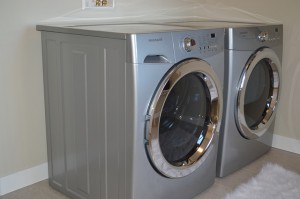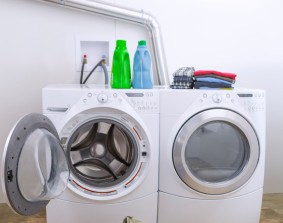 A washing machine and dryer is an essential part of equipment in a home that helps its residents to carry out the necessary cleaning of apparel. A washer that is not working properly or has completely stopped working can bring life to a halt and disrupt already busy schedules. When the dryer gives up, you may be forced to lay all your laundry out to dry, and this can lead to a messy home.
A washing machine and dryer is an essential part of equipment in a home that helps its residents to carry out the necessary cleaning of apparel. A washer that is not working properly or has completely stopped working can bring life to a halt and disrupt already busy schedules. When the dryer gives up, you may be forced to lay all your laundry out to dry, and this can lead to a messy home.
Most washers come with proper instruction manuals that allow you to troubleshoot problems and find solutions to get it going again. You need to ensure that the power is getting to your washer and that the problem is not due to lack of supply. Start with checking the door, because most washers have a feature that prevents the unit from starting unless the door is firmly latched. They will also have a reset switch that will make the machine start from scratch and ignore all previous instructions. An overheating machine can also be a reason for it’s not starting again, and you need to give it time to cool off before you try starting it again or resetting it.
Washers can also cause problems if there is a leak in the inlet pipe and the water getting into to is not sufficient. At times, drain pipes may leak and not allow water levels to build up. Often, this defect is due to something stuck in the valve, or probably part of clothing or something left inadvertently with the clothes. Removing this may require clearing the washer repair and reaching down to the valve. Washing machines can also become noisy and indicate problems with their working and moving parts that are better left to the experts to look at. A washing machine that is not properly balanced can also cause noisy operation.
Dryers in washers can also cause problems that can come from faulty moisture sensors that switch off too early and leave your clothes damp, or have the machine running even after the clothes are sufficiently dry. This defect will increase your power bills. Thermostats can also at times be malfunctioning and preventing the right temperature from being created in the dryer. A clogged vent can lead to the dryer becoming too hot, even if the sensor and thermostat are functioning correctly. Make sure the lint trap is clean as this can at times lead to problems with the washer and dryer.
